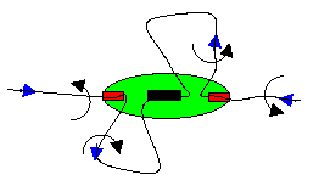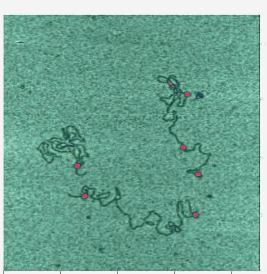Operation of molecular motors
The burgeoning field of nanotechnology is attempting to make molecular scale machines. Many ideas arise from the examination of how nature produces the tiny protein molecular motors essential for life. We are studying a protein capable of binding to a specific sequence of nucleotide bases on DNA, recognising the chemical status of the sequence and then either modifying the sequence or starting a powerful molecular motor capable of pulling the DNA into the motor. This motor is capable of moving DNA molecules 1000 times larger than the motor. To examine the recognition of the DNA sequence and its chemical status, processes that involve the distortion of the DNA, we use fluorescence polarisation and picosecond time-resolved fluorescence spectroscopies. We have employed atomic force microscopy to visualise the operation of single motors operating on DNA (in collaboration with R. Henderson, Cambridge University, http://www.phar.cam.ac.uk/RI/AFM_Bioim.html).
To understand the motor in more detail we propose to use laser tweezers and advanced single molecule fluorescence imaging methods to measure the linear and rotational forces generated by the motor on DNA when it is switched on.

